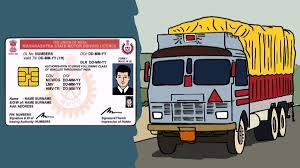Getting Your Driving Truck License, Driving a truck is not just about having a license; it requires specialized training, skills, and knowledge of regulations to ensure safety on the road. A driving truck license is essential for anyone looking to pursue a career in trucking or to operate larger vehicles for personal or commercial purposes. This blog post will cover the types of truck licenses, the requirements to obtain one, the training process, and the benefits of becoming a licensed truck driver.
Types of Truck Licenses
Truck licenses vary depending on the size and weight of the vehicle you wish to operate. Here are the most common types:
- Class A License: This is the most versatile truck license, allowing you to drive combination vehicles with a gross vehicle weight rating (GVWR) of over 26,001 pounds. This includes tractor-trailers, flatbeds, and other large trucks.
- Class B License: This license allows you to operate single vehicles with a GVWR of over 26,001 pounds. Examples include straight trucks, buses, and box trucks.
- Class C License: This license is for smaller vehicles, typically used to transport passengers or hazardous materials. It allows you to drive vehicles not covered under Class A or B.
Requirements to Obtain a Truck Driving License
To obtain a driving truck license, you must meet specific requirements, which can vary by state or province. Here are the general prerequisites:
- Age: You must be at least 18 years old to obtain a commercial driving license (CDL) for intrastate driving (within the same state). For interstate driving (across state lines), you usually need to be at least 21.
- Medical Examination: A medical exam is required to ensure you are physically fit to operate a commercial vehicle. This often includes a vision and hearing test.
- Valid Regular Driver’s License: Before applying for a truck driving license, you must hold a valid regular driver’s license.
- Background Check: Some jurisdictions may require a background check, especially if you plan to drive for a company that transports hazardous materials.
- Training: Completing a truck driving training program from an accredited school is highly recommended, as it equips you with the necessary skills and knowledge.
Training Process for Truck Drivers
The training process is a crucial step in obtaining your driving truck license. Here’s what to expect:
- Enrollment in a Truck Driving School: Choose an accredited truck driving school that offers comprehensive training programs. These programs typically last from a few weeks to several months, depending on the curriculum.
- Classroom Instruction: You will learn about federal and state regulations, vehicle maintenance, safety procedures, and the basics of operating a truck.
- Behind-the-Wheel Training: Hands-on training is essential for mastering the skills needed to drive a truck. You will practice maneuvers, backing up, and driving in various road conditions under the supervision of a certified instructor.
- Preparation for the CDL Exam: Once you’ve completed your training, you’ll prepare for the CDL exam, which includes both a written test and a driving skills test.
The CDL Exam Process
To obtain your driving truck license, you must pass the CDL exam, which consists of three parts:
- Written Knowledge Test: This test assesses your understanding of trucking regulations, safety practices, and vehicle operation.
- Pre-Trip Inspection Test: You’ll demonstrate your ability to conduct a thorough pre-trip inspection of the truck, checking for safety and maintenance issues.
- Driving Skills Test: In this practical test, you will drive a truck and perform various maneuvers, such as turning, backing up, and parking, under the observation of an examiner.
Benefits of Becoming a Licensed Truck Driver
- High Demand: The trucking industry is always in need of qualified drivers, making it a stable career choice with numerous job opportunities.
- Competitive Salary: Truck drivers often earn a competitive salary, especially those with specialized training or experience in long-haul trucking.
- Independence: Driving a truck allows for a degree of independence, as drivers often work alone and manage their schedules.
- Travel Opportunities: Truck drivers have the chance to travel across the country, exploring new places while doing their job.
- Job Satisfaction: Many drivers enjoy the sense of accomplishment that comes from transporting goods and contributing to the economy.
Conclusion
Obtaining a driving truck license is a significant step toward a rewarding career in the trucking industry. By understanding the types of licenses, meeting the necessary requirements, and completing the training process, you can position yourself for success as a licensed truck driver. With the ongoing demand for qualified drivers, now is an excellent time to consider this path. Embrace the challenges and opportunities that come with driving a truck, and enjoy the journey ahead!
you might also like these:
